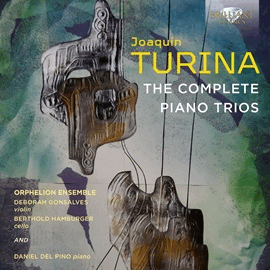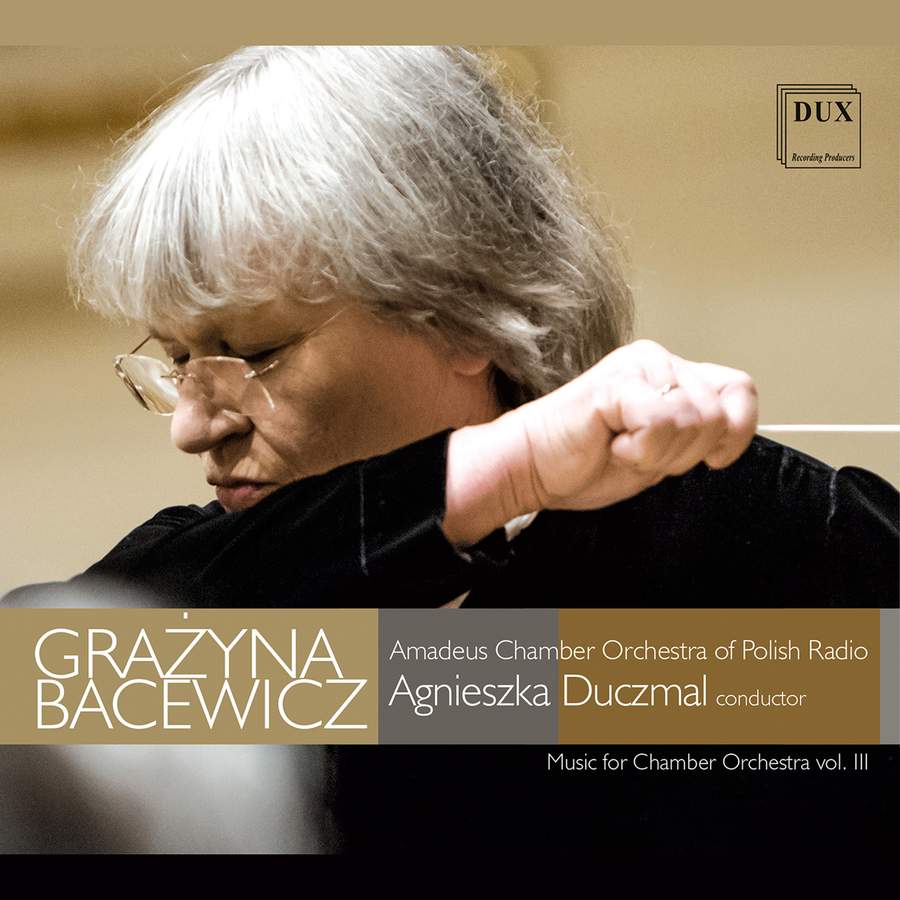Grazyna Bacewicz ist wohl die bedeutendste polnische Komponistin in der ersten Hälfte des 20. Jahrhunderts. Wie viele andere Musiker aus Zentraleuropa hat sich auch Bacewicz mit den politischen Gegebenheiten ihrer Zeit musikalisch auseinandergesetzt. Das Resultat ist eine sehr ausdrucksstarke Musik, eine ständige Suche nach Klang. Dies wird auch in der Aufnahme mit dem Amadeus Chamber Orchestra sehr deutlich.
Das Programm wird mit dem Divertimento von 1965 eröffnet, ein Spätwerk von Grazyna Bacewicz und gewissermaßen die Summe ihres Musikerinnenlebens. Das knapp siebenminütige Werk komprimiert Klangstrukturen und Rhythmen auf ihre Essenz, die Agnieszka Duczmal und ihre Musiker auf den Punkt treffen.
Sehr spannend wirkt der Kontrast zur Sinfonietta von 1935 mit ihrem eher klassischen Nachhall und einer energetischen Klangsprache, die betroffen macht.
Darin liegt eigentlich die Stärke dieser Produktion. Die Musik lässt den Zuhörer nie kalt, sie berührt, hat eine enorme Anziehungskraft. Der Orchesterklang ist ebenso kompakt wie ausdifferenziert. Hier spielen Musiker, die sich voll für die Partituren engagieren.
Dirigentin Agnieszka Duczmal reduziert die meist kurzen Werke nicht zu Bonsai-Partituren, sondern gestaltet sie als kohärente musikalische Architekturen, in denen sich kleine Elemente in kurzer Zeit zu einem Ganzen verbinden.
Grazyna Bacewicz is probably the most important Polish composer in the first half of the 20th century. Like many other musicians from Central Europe, Bacewicz dealt musically with the political realities of her time. The result is highly expressive music, a constant search for sound. This is also very evident in the recording with the Amadeus Chamber Orchestra.
The program opens with the Divertimento from 1965, a late work by Grazyna Bacewicz and in a sense the sum of her life as a musician. The barely seven-minute work compresses sound structures and rhythms to their essence, which Agnieszka Duczmal and her musicians get to the heart of.
The contrast with the Sinfonietta of 1935, with its more classical reverberations and an energetic sound language that affects, is very exciting.
Therein, in fact, lies the strength of this production. The music never leaves the listener cold, it touches, has an enormous appeal. The orchestral sound is as compact as it is differentiated. Here, musicians play who are fully committed to the scores.
Conductor Agnieszka Duczmal does not reduce the mostly short works to bonsai scores, but shapes them as coherent musical architectures in which small elements combine in a short time to form a whole.


















